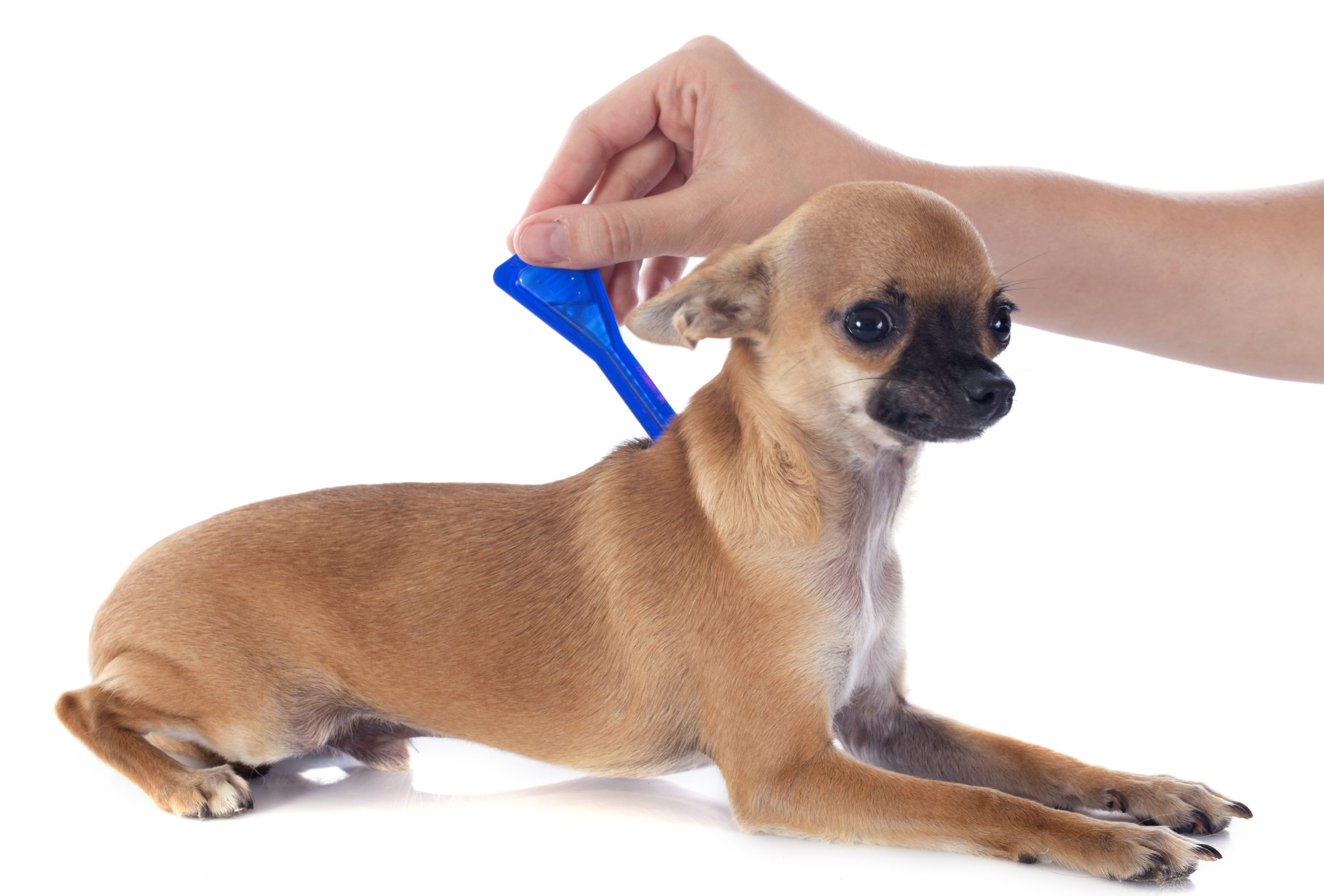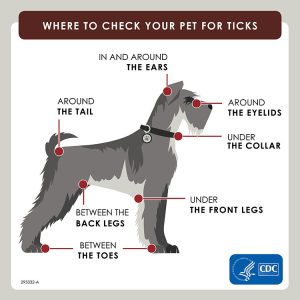How to Keep Ticks Off Dogs

Ticks may be small, but they can cause significant problems for your dog. These tiny, spider-like parasites attach to your dog’s skin and feed on their blood. While that alone is concerning, the real danger is that ticks can transmit serious diseases.
If you are a dog owner, it’s crucial to understand tick behavior, their habitats, and how to keep them away from your pet. The good news is that adopting a few simple habits and precautions can greatly help protect your furry friend.
Where Ticks Hide—and Why Dogs Are Prime Targets
Ticks thrive in warm, humid environments and are most commonly found in wooded areas, tall grass, and even local parks. They go through four life stages—egg, larva, nymph, and adult—and they need a blood meal at each one to survive.
Dogs, with their love for sniffing, exploring, and rolling in grass, often make easy hosts for ticks without even knowing it. That’s why regular tick checks and a basic understanding of their life cycle can help you stay one step ahead.
Why Tick Prevention Matters So Much
It’s easy to overlook a tick here and there, especially if your dog has thick fur. But it’s not just about being itchy or uncomfortable—ticks can transmit serious illnesses. One of the most well-known is Lyme disease, which can cause fatigue, joint pain, and appetite loss. If left untreated, it can even damage your dog’s kidneys.
Other tick-borne diseases like Ehrlichiosis and Anaplasmosis can also cause fever, bleeding disorders, and other worrying symptoms. While not every tick carries disease, it’s always better to be cautious.
That’s why tick prevention is more than just a hygiene step—it’s a part of your dog’s overall health care routine.
How to Check for Ticks on Your Dog
Spotting a tick early can make all the difference. The most common areas to find them are around your dog’s head, ears, neck, and between their toes. After walks or outdoor playtime, run your hands gently over your dog’s body, feeling for any tiny bumps or raised spots.
If your dog is licking, biting, or scratching a certain area more than usual, take a closer look—especially if you notice redness, irritation, or swelling.
Did You Find a Tick? How to Remove It Safely
If you spot a tick, try not to panic. Removing it properly and calmly is the most important thing. Use a pair of fine-tipped tweezers or a tick removal tool. Grip the tick as close to the skin as possible and pull straight up with steady pressure. Avoid twisting or jerking—it can cause parts of the tick to stay embedded.
After removal, clean the area with an antiseptic and monitor your dog for a few days. If you notice anything unusual, such as fever or fatigue, check in with your veterinarian..
Tick Prevention Tips That Work
Keeping ticks off your dog takes a mix of consistent habits and effective products. Here are a few tips to get started:
- Use vet-approved tick preventatives, such as spot-on treatments, oral medications, or tick collars. Consult with your veterinarian to determine the best option for your dog’s lifestyle and health needs.
- Keep your outdoor spaces tidy—mow the lawn, clear brush, and remove leaf litter regularly to reduce tick habitats.
- Stick to trails during hikes and walks, avoiding tall grasses and thick underbrush.
- Groom your dog regularly, especially during peak tick seasons, to spot any hidden hitchhikers early.

Choosing a Flea and Tick Combination Medicine for Dogs
As Lauren Jones, VMD wrote in the PetMD article: “There are a variety of products to help keep your dog free of parasites. These products can be in the form of pesticides, repellents, or growth inhibitors. Each tackles pests at different life stages to prevent infestations.
Some products are only effective against one parasite (typically fleas). Combination flea and tick preventatives for dogs contain multiple ingredients to battle different types of pests. These prevention options may also provide additional protection against heartworms, skin and ear mites, and intestinal parasites.
Before deciding on a flea and tick medication, always check with your veterinarian and make sure it’s a good fit for your dog.”
Read here for more detailed insights.
When Are Ticks Most Active?
Ticks are most active from spring through fall, but in some places, they can be a year-round concern. During these high-risk months, it is especially important to stay on top of preventive measures.
You can even check local tick activity reports from your vet clinic or public health department to see what the risk looks like in your area.
How Can Pet Insurance Help You if Your Dog Needs Treatment?
Pet insurance can be a valuable tool in managing the costs of treating a dog’s veterinary expenses. By having a pet insurance policy in place, you can have peace of mind knowing that you can provide medical care for your furry companion without worrying about the financial burden. Pet insurance can help cover the costs of veterinary consultations, diagnostic tests, medications, and even specialized treatments if required.
Reimbursement
This method is the most common for pet insurance companies. You pay out of pocket for the veterinarian bill, and then the insurance company reimburses you for what’s covered under the insurance plan. The steps look like this.
- You pay the vet bill after your dog’s visit.
- You fill out the pet insurance claim form.
- Submit the claim form and other required documentation to the insurer.
- After the claim is approved, you will be reimbursed for eligible expenses.
What Does Odie Pet Insurance Cover?
Pet insurance covers various veterinary expenses, providing financial protection and peace of mind for pet owners. Here are the details of the coverage options offered by Odie Pet Insurance:
Illness & Injury Plan
The Illness & Injury Plan is an all-inclusive insurance plan designed to cover a wide range of medical needs for your pet. This plan includes comprehensive coverage for various illnesses, injuries, and veterinary services. Some of the covered items include:
- Veterinary exams and consultations
- Diagnostics (e.g., X-rays, lab tests)
- Prescribed medications
- Surgeries and hospitalization
- Rehabilitation, acupuncture, or chiropractic treatments
- Medically necessary supplies
- Euthanasia and cremation
The Wellness Plan
The Wellness Plan is a monthly membership that focuses on preventive care and covers routine veterinary services.
- Provides reimbursements for routine care items such as wellness visits (exams and vaccines), testing and parasite prevention, dental cleanings and at-home dental care, vitamins, supplements, and more.
- Through Odie’s partnership with Petivity, a leader in smart pet products and proactive care, Wellness Plan members can also receive reimbursements for Petivity devices and health kits, as well as eligible Purina food and supplements.
- Total reimbursement up to $700 per year.




